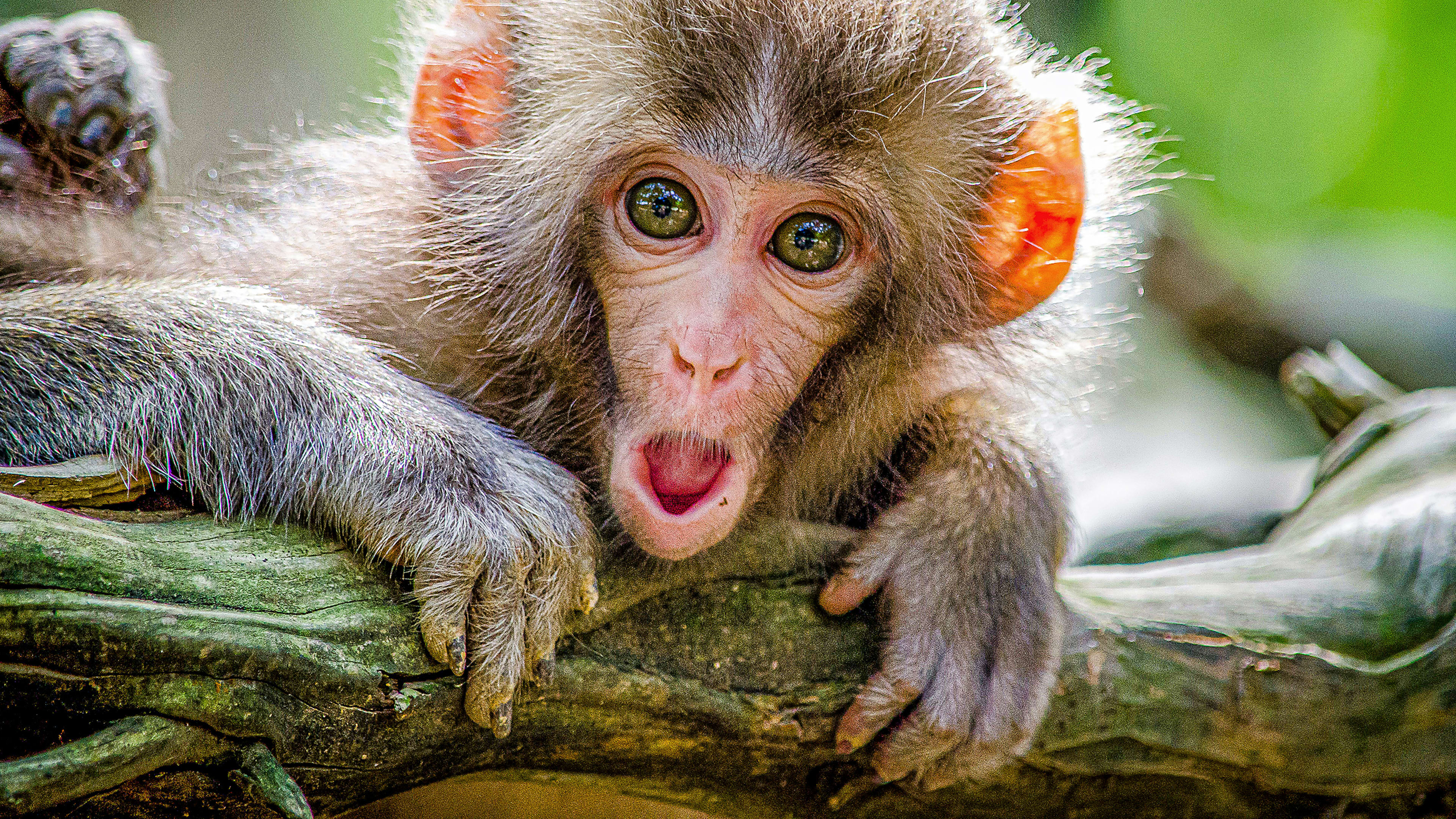For wannabes hoping to conjure up feats of magic, the French drop is often the first trick in the spell book. A coin is held by the fingers of one hand. The illusionist moves a second hand in front of the coin, appearing to grab it with the thumb and forefinger, presumably transferring it to the free hand. Then after a few theatrics—reciting a dramatic pitch of mumbo-jumbo or perhaps a swish of the ol’ magician’s cape—poof! That second hand is revealed to be empty, and the coin, vanished into thin air.
It’s a sleight-of-hand as old as time. (The secret: The coin never left the first hand—it was simply dropped into the palm of that hand, while our line of sight was blocked by the second hand.) Yet, we get got, again and again. Why?
If you want to know, ask a monkey. That’s what the premier academics at the United Kingdom’s University of Cambridge did.
They wondered what would happen if they performed the French drop—defying the very laws of reality—for three distinct crowds of primates. Would these clever animals become wise to the folly? Or be baffled like rest of us? Would they go bananas? Demand an encore?
As it turns out, whether or not the monkeys were amused depended on their anatomy. While monkeys with opposable thumbs—just like us—were bamboozled by the coin’s sudden disappearance, other monkeys with more paw-like appendages were smart to the coin’s whereabouts all along. And with this truth, humankind’s closest species relative has shed light on why we get fooled, too.
According to researchers at Cambridge’s Comparative Cognition Lab, in a study published in Current Biology, it’s because our brains know what’s supposed to be happening. Despite the fact that, by design, we’re kept from observing with our own eyes, our brains fill in the blanks—assuming knowledge of what cannot be seen.
We cannot see the illusionist’s second hand actually grasp the coin because the thumb of that hand is purposefully folded out of view of the spectator. But we know a thumb is there, and we know how a thumb behaves, so we assume it must be clamped down from the other side.
“It is a great way to study blind spots in attention and perception,” says Elias Garcia-Pelegrin, a former doctoral candidate at Cambridge and decade-long practitioner of magic. “By investigating how species of primates experience magic, we can understand more about the evolutionary roots of cognitive shortcomings that leave us exposed to the cunning of magicians.”
Losing a snack for science
Monkeys might rival humans in wit. But in the course of Cambridge’s study, the “cunning of magicians” euchred more than a few unwitting subjects out of their midday snacks—which seemed to be dangled in front of them before being cruelly snatched away by invisible forces. Magicians who performed the French drop for monkey audiences used peanuts, marshmallows, and dried mealworms instead of coins, and those who correctly identified where the treat was at the end of the trick could keep the food as a reward. Those who failed were denied.
Capuchin monkeys, who have famously nimble opposable thumbs, which are often used to clutch stones in order to crack open nuts in the wild, were fooled 81% of the time, losing out on their beloved nuts. Squirrel monkeys, who also have opposable thumbs, were fooled 93% of the time.
But marmosets, who lack opposable thumbs—all the better for climbing tree trunks—were fooled only 6% of the time, enjoying a marshmallow feast. And in 2021, another study showed that animals who didn’t have any hands whatsoever—specifically, Eurasian jay birds—were also rarely fooled.
It all points to the “embodiment of knowledge,” or a “mirroring in the neural motor system,” according to Nicola Clayton, a Cambridge psychology professor. “How one’s fingers and thumbs move helps to shape the way we think, and the assumptions we make about the world,” she says.
Even more convincing: When researchers varied their trick to spoof an action that all primates are capable of—a full-fist grab—the marmosets were duped, too.
But you—and the marmosets and the Capuchins—shouldn’t feel bad about your gormlessness. “Magicians use intricate techniques to mislead the observer into experiencing the impossible,” says Garcia-Pelegrin. And somewhere, deep within the recesses of our impenetrable minds, we just want to believe.
Recognize your brand’s excellence by applying to this year’s Brands That Matter Awards before the early-rate deadline, May 3.
